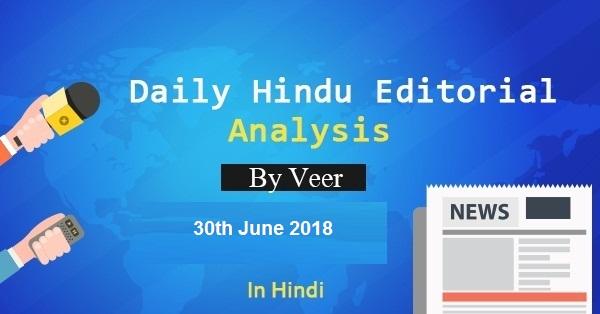Table of Contents
Today- Essay- 800-1200 words
Where Should India Invest More – Human
Capital or Human Development?
Reform 101
More thought is needed on the proposed regulatory body for higher education
Higher Education Commission of India (HECI) Bill drafted by the Centre have far reaching
implications for the expansion and quality of human resource development, at a time
when access to skill building and educational opportunity are vitally important.
There were 864 recognized universities and 40,026 colleges in the country in 2016- 17,
To put this in perspective, there were only 20 universities and 500 colleges at the time of
Independence.
That challenging goal will fall to the HECI, the proposed successor body to the University
Grants Commission.

Continue

Centre should give sufficient time to academia, the teaching community and society at large
to submit considered opinions on the draft proposals.
Among the key questions that need resolution is the future role of multiple regulatory bodies
that currently exist for engineering, medicine and law; – Yash Pal Committee had
recommended that they should be brought under the ambit of a single commission
Centre’s decision to shift grant-giving powers for higher education institutions to
the Ministry of Human Resource Development or a separate body.
The UGC has been doing this so far, covering a variety of functions, and whatever the
flaws, it ensured a separation of funding decisions from political considerations.
Maintaining a balance on allocation of funds and ensuring transparency will now depend
on the proposed advisory council to the HECI.
Continue
It is welcome that the States are represented on the advisory council, giving it a federal
character, although it is the Centre that will have the final say in all matters, not even
the apex HECI.
At a broader level, higher education is challenged today by fast-paced technological changes
affecting the economy and the need to create a workforce that has the requisite skills.
There is a positive attempt in the draft legislation to weed out degree mills
Reform should, therefore, lead to the creation of an agency that has the intellectual
corpus to help universities and colleges adapt, and the vision to plan for public funding in
the emerging spheres of activity.
A broken tax chain
The GST’s faulty design has prevented the economy from benefiting fully from the indirect
tax regime.
A year ago, at a special midnight session in Parliament, the launch of the goods and
services tax (GST) was heralded as the new freedom.
A year on, what has the GST achieved?- One should not expect instant results.
There will be many short comings when a complex reform is rolled out.
But the question is this: is the economy headed in the right direction?
Arguments in favour of the GST were that
It would lead to ease of doing business;
Make markets efficient;
Yield higher tax collections;
Lead to lower prices.
With higher tax collection,
The government would be able to deliver better services.
Thus, the GST was presented as a win-win situation for everyone.


From the start
Businesses have not yet experienced ‘ease of doing business’ though some have adjusted to it.
To begin with, the GST rates were fixed rather late- Industry could not fix prices well in time
and difficulties grew right from day one
IT functioning of the Goods and Service Tax Network (GSTN) has been unsatisfactory
Taking cognisance of these, the government made rapid changes during the year through
the GST Council (the body set up to govern GST)- But this only added to the confusion
For example, the e-way bill (to track goods being transported) was postponed to April 2018.
Prices have not fallen- Of course, there are many factors underlying inflation such as a rise in
petroleum goods prices.
Continue
The tax rate structure (0%, 5%, 12%, 18% and 28%) also adds to the complexity
India does not have a full GST which is applicable from raw material to final good/service.
The chain is broken in many places- This partial GST is a result of trying
to fulfil many policy objectives.
GST is not bigger than policy changes introduced in 1991 and hence not the biggest reform.
It is not yielding more revenue to enable governments to spend more on services for the poor.
Further, by damaging the unorganized sectors, it has set back output and employment in the economy rather than leading to a higher growth rate.
In brief, while there are a few gains, the economy is not headed in the right direction because
of the faulty design of the GST.
Prelims Focus Facts-News Analysis

Page-1- Monsoon covers entire country 15 days in advance
Prelims Focus Facts-News Analysis
Page-1- Not all Swiss bank money illegal: govt.
Can’t assume 50% rise in deposits is black money: Goyal
The Minister was responding to news reports that money parked by Indians
in Swiss banks rose to CHF (Swiss Franc)1.01 billion (₹7•000 crore) in 2017.
‘Soft policing’ stops social media misuse
Iran not just an energy supplier: Ansari
Says govt. should consider the ‘totality’ of its ties with the country while responding to U.S.
Demand
FinancialAction Task Force (FATF)- hands 10-point plan to Pak
EU leaders reach migration deal after difficult talks.
Map Practice

Watch daily free video – The Hindu editorial analysis





















 WhatsApp
WhatsApp